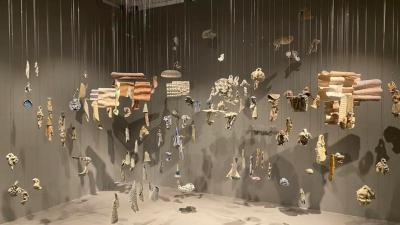Researchers at the National University of Singapore (NUS), and Deliarts recently presented an interdisciplinary approach combining materials science, ultrasonication, artistic expression, and curatorial practice to develop graphene-enhanced ceramics, improving strength and aesthetics. The focus of the approach was incorporating graphene oxide (GO) into kaolin clay and exploring its effects on material properties.
Image taken from: technologynetworks.com, Credit: Daria Andreeva, National University of Singapore, and Delia Prvački, Deliarts Pte Ltd.
In recent years, scientists have been adding GO to ceramic slurries — consisting of particles of kaolin clay or other materials dispersed in water — to make fired ceramics more durable and resistant to thermal shock. The team adapted this technique by using ultrasound to better mix the GO into kaolin slurries. They adjusted GO concentration and ultrasound exposure time to find the conditions that most enhanced the resulting ceramics’ strength and heat resistance. The team also collaborated with artist-in-residence Delia Prvački, who created works from the new ceramic material that are on display at the National University of Singapore Museum.
The scientists found that the addition of 0.5 wt % GO, combined with a sonication time of 10 min, led to the highest storage modulus and improved thermal stability.
Ultrasonication proved to be an effective method for dispersing and distributing GO particles within the kaolin matrix, resulting in an enhanced material performance.
Furthermore, the application of novel composites provided by Prvački adds a unique dimension to the study. Through the artistic interpretation, the tactile qualities and aesthetic potential of the composites were explored, shedding light on the transformative power of materials and cultural significance organized as part of an artist-in-residence commission, introduced in conjunction with the NUS Public Art Initiative. This interdisciplinary collaboration accompanied by an exhibition at the NUS Museum demonstrates the value of merging scientific research, technological advancements, and artistic exploration.
“We explored artistic potential by experimenting with novel ceramic forms and textures,” the study’s authors note. “Harnessing the properties of graphene pushes the boundaries of traditional ceramic art, enabling the creation of delicate and intricate ceramic structures that were previously unattainable. This approach not only enhances the artistic possibilities but also can potentially reduce the need for structural elements.”




